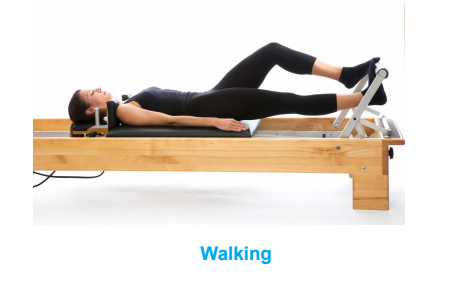Pilates and Gait Pattern
Gait pattern develops from when we are young, it is a primitive response, which becomes a subconscious thought once walking is learnt. Gait requires good strength, balance and coordination to be able to keep walking on two legs.
A change in gait can affect a person’s everyday life as to whether they can achieve their day to day tasks, go to work or play their desired sports. Gait can be affected by a number of factors. A few examples are age-related, post-surgical, congenital and neurological conditions.
Although it may be perceived that walking is a lower limb movement, it is actually all-encompassing of the whole body.
Let’s start by breaking down a few key elements of a gait pattern.
Lower limb and core strength
Strength throughout the lower limb and core is needed to be able to maintain balance standing upright, and when walking to be able to transfer weight from one side of the body to the other. This occurs through the bodies network of muscles all working together to maintain balance and proprioception. Proprioception is an awareness of the body’s position in relation to its surroundings, which is very important when negotiating foot placement.
However, a multitude of factors can affect this, for example, you may see a higher incidence of falls in the elderly when reduced strength and balance occurs.
Lower limb range of movement
Range of movement in the lower limb is needed to be able to effectively swing the legs forwards; this motion comes from the hips. Movement at the knees and particularly the ankles are required to clear the foot from the floor. The heel of the foot strikes first as the weight is transferred onto the weight-bearing leg; the foot is flat to take the weight of the body; the movement finishes by weight being transferred onto the ball of the foot, ready to push off the foot and swing the leg forwards. Range of movement is required throughout the ankle in order to perform a smooth motion during gait.
Arm movement
During gait the arms swing forwards and backwards, this goes hand in hand with the natural motion of walking and gives momentum to step the lower limb(s) forwards. The motion of the upper limb(s) helps to maintain balance and connects the muscular kinetic chain throughout the upper and lower body.
Pilates
Pilates can help improve all factors affecting a gait pattern. It is important to consider that when any factors of gait are compromised, a gait pattern may alter.
It is important to improve the strength of the gluteus, quadriceps, inner thigh muscles and core, to help improve gait.
Pilates can be very adaptable, with exercises starting lying on the floor to work on basic core and lower limb strength and then gradually progressing into functional positions, such as standing and dynamic exercises, with arm movements added. Pilates equipment can also be used to add extra resistance when required.

Author: Laura Jenkins
Physiotherapist
Unite Health/ APPI Pilates Certified Pilates instructor and Educator